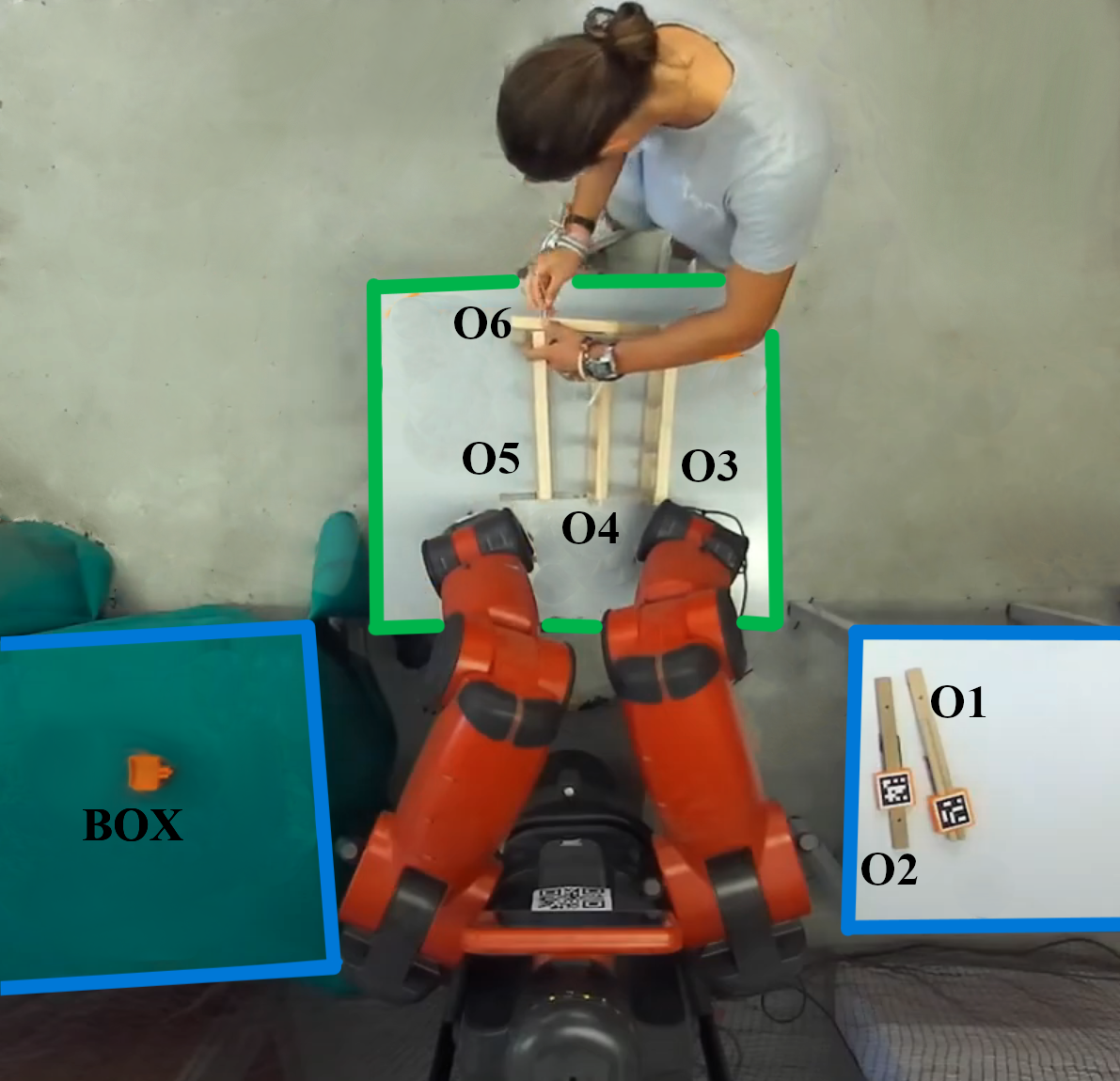Towards Human-Centered Construction Robotics: An RL-Driven Companion Robot For Contextually Assisting Carpentry Workers
2403.19060

0
0

Abstract
In the dynamic construction industry, traditional robotic integration has primarily focused on automating specific tasks, often overlooking the complexity and variability of human aspects in construction workflows. This paper introduces a human-centered approach with a work companion rover designed to assist construction workers within their existing practices, aiming to enhance safety and workflow fluency while respecting construction labor's skilled nature. We conduct an in-depth study on deploying a robotic system in carpentry formwork, showcasing a prototype that emphasizes mobility, safety, and comfortable worker-robot collaboration in dynamic environments through a contextual Reinforcement Learning (RL)-driven modular framework. Our research advances robotic applications in construction, advocating for collaborative models where adaptive robots support rather than replace humans, underscoring the potential for an interactive and collaborative human-robot workforce.
Create account to get full access
Introduction

Background and Related Works
Problem Statement
V Approaches

Experiments and Results
Conclusion and Future Work
This summary was produced with help from an AI and may contain inaccuracies - check out the links to read the original source documents!
Related Papers

A Modular Framework for Flexible Planning in Human-Robot Collaboration
Valerio Belcamino, Mariya Kilina, Linda Lastrico, Alessandro Carf`i, Fulvio Mastrogiovanni

0
0
This paper presents a comprehensive framework to enhance Human-Robot Collaboration (HRC) in real-world scenarios. It introduces a formalism to model articulated tasks, requiring cooperation between two agents, through a smaller set of primitives. Our implementation leverages Hierarchical Task Networks (HTN) planning and a modular multisensory perception pipeline, which includes vision, human activity recognition, and tactile sensing. To showcase the system's scalability, we present an experimental scenario where two humans alternate in collaborating with a Baxter robot to assemble four pieces of furniture with variable components. This integration highlights promising advancements in HRC, suggesting a scalable approach for complex, cooperative tasks across diverse applications.
6/10/2024
💬
Integrating Large Language Models with Multimodal Virtual Reality Interfaces to Support Collaborative Human-Robot Construction Work
Somin Park, Carol C. Menassa, Vineet R. Kamat

0
0
In the construction industry, where work environments are complex, unstructured and often dangerous, the implementation of Human-Robot Collaboration (HRC) is emerging as a promising advancement. This underlines the critical need for intuitive communication interfaces that enable construction workers to collaborate seamlessly with robotic assistants. This study introduces a conversational Virtual Reality (VR) interface integrating multimodal interaction to enhance intuitive communication between construction workers and robots. By integrating voice and controller inputs with the Robot Operating System (ROS), Building Information Modeling (BIM), and a game engine featuring a chat interface powered by a Large Language Model (LLM), the proposed system enables intuitive and precise interaction within a VR setting. Evaluated by twelve construction workers through a drywall installation case study, the proposed system demonstrated its low workload and high usability with succinct command inputs. The proposed multimodal interaction system suggests that such technological integration can substantially advance the integration of robotic assistants in the construction industry.
4/5/2024
🚀
Enabling Building Information Model-Driven Human-Robot Collaborative Construction Workflows with Closed-Loop Digital Twins
Xi Wang, Hongrui Yu, Wes McGee, Carol C. Menassa, Vineet R. Kamat

0
0
The introduction of assistive construction robots can significantly alleviate physical demands on construction workers while enhancing both the productivity and safety of construction projects. Leveraging a Building Information Model (BIM) offers a natural and promising approach to driving robotic construction workflows. However, because of uncertainties inherent in construction sites, such as discrepancies between the as-designed and as-built components, robots cannot solely rely on a BIM to plan and perform field construction work. Human workers are adept at improvising alternative plans with their creativity and experience and thus can assist robots in overcoming uncertainties and performing construction work successfully. In such scenarios, it is critical to continuously update the BIM as work processes unfold so that it includes as-built information for the ensuing construction and maintenance tasks. This research introduces an interactive closed-loop digital twin framework that integrates a BIM into human-robot collaborative construction workflows. The robot's functions are primarily driven by the BIM, but it adaptively adjusts its plans based on actual site conditions, while the human co-worker oversees and supervises the process. When necessary, the human co-worker intervenes to help the robot overcome the encountered uncertainties. A drywall installation case study is conducted to verify the proposed workflow. In addition, experiments are carried out to evaluate the system performance using an industrial robotic arm in a research laboratory setting that mimics a construction site and in the Gazebo simulation. Integrating the flexibility of human workers and the autonomy and accuracy afforded by the BIM, the proposed framework offers significant promise of increasing the robustness of construction robots in the performance of field construction work.
5/30/2024
📈
Enhancing the LLM-Based Robot Manipulation Through Human-Robot Collaboration
Haokun Liu, Yaonan Zhu, Kenji Kato, Atsushi Tsukahara, Izumi Kondo, Tadayoshi Aoyama, Yasuhisa Hasegawa

0
0
Large Language Models (LLMs) are gaining popularity in the field of robotics. However, LLM-based robots are limited to simple, repetitive motions due to the poor integration between language models, robots, and the environment. This paper proposes a novel approach to enhance the performance of LLM-based autonomous manipulation through Human-Robot Collaboration (HRC). The approach involves using a prompted GPT-4 language model to decompose high-level language commands into sequences of motions that can be executed by the robot. The system also employs a YOLO-based perception algorithm, providing visual cues to the LLM, which aids in planning feasible motions within the specific environment. Additionally, an HRC method is proposed by combining teleoperation and Dynamic Movement Primitives (DMP), allowing the LLM-based robot to learn from human guidance. Real-world experiments have been conducted using the Toyota Human Support Robot for manipulation tasks. The outcomes indicate that tasks requiring complex trajectory planning and reasoning over environments can be efficiently accomplished through the incorporation of human demonstrations.
6/21/2024